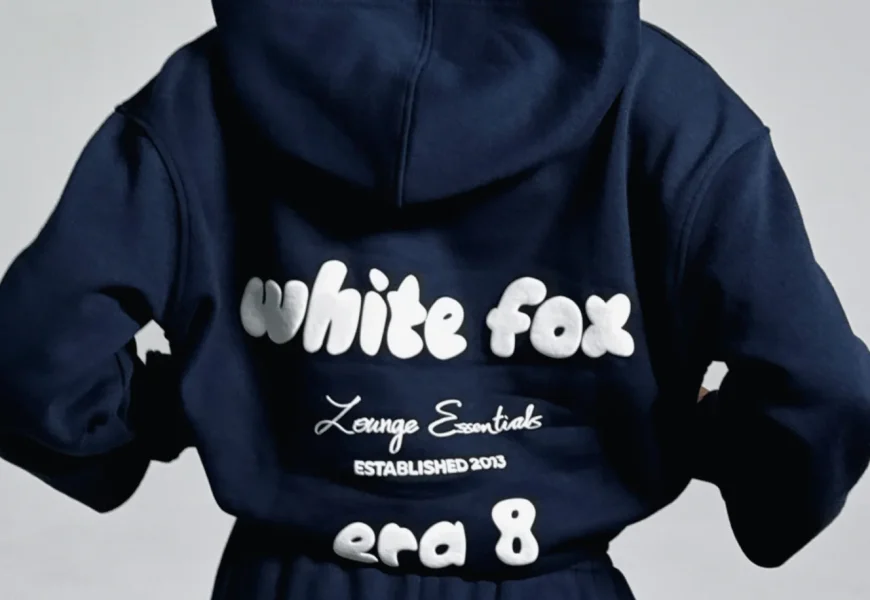White Fox: A Journey Through the Arctic’s Elusive Snow Phantom
In the frostbitten, snow-blanketed reaches of the Arctic Circle, a curious and charismatic creature thrives amid the extreme cold: the white fox, often known as the Arctic fox (Vulpes lagopus). These remarkable animals are well adapted to one of the harshest environments on Earth. Their story is one of survival, adaptation, and beauty, and their role in the fragile Arctic ecosystem makes them an animal worth learning about. This article dives into the world of the white fox, exploring its characteristics, adaptations, lifestyle, and significance in the ecosystem, while also examining the challenges it faces in a rapidly changing climate.
A Portrait of the White Fox
The white fox, a small but highly resilient mammal, is known for its pristine white fur that allows it to blend seamlessly with its snowy surroundings. The fox is typically about 25 inches in body length, with an additional 12 inches of bushy tail that helps it maintain balance, stay warm, and communicate with other foxes. Weighing only 6 to 10 pounds, it’s a small creature compared to other Arctic animals, yet its thick, insulating fur and resourceful nature make it one of the best-suited to this cold landscape.
One of the white fox’s most striking features is its changing coat. As winter approaches, its fur turns pure white, offering camouflage against the snow, protecting it from predators, and helping it sneak up on its prey. When summer arrives, the white fox’s fur changes to brown or gray, providing better camouflage among the rocks, soil, and sparse vegetation of the thawed tundra.
Habitat: Surviving the Frozen North
The white fox is native to the Arctic regions of North America, Greenland, Scandinavia, and Russia, living mostly in tundra regions, coastal areas, and sometimes near the edges of icy pack ice. The vast, open tundra may seem bleak to us, but to the white fox, it is home.
Their habitats offer unique advantages. Coastal zones, for instance, provide white foxes with access to marine resources like fish and marine birds, while the tundra has plenty of small mammals, like lemmings, which are a staple in the fox’s diet. The fox’s ability to adapt to different terrains and food sources is vital for its survival, as the Arctic’s extreme seasonal changes bring significant fluctuations in resource availability.
Remarkable Adaptations for the Cold
The Arctic fox’s thick coat is more than just a winter cloak; it’s a masterwork of insulation that keeps the animal warm even when temperatures plummet below -50°F (-45°C). Unlike many mammals, white foxes have fur on their paws, acting as snow boots that prevent heat loss when walking on ice or snow. Additionally, their compact bodies and short snouts, legs, and ears help minimize exposure to the cold.
The white fox also has a unique metabolic adaptation. It can lower its metabolic rate when food is scarce, conserving energy while still maintaining essential bodily functions. During summer, when food is more abundant, the fox increases its activity and hunts more, storing up fat for the lean winter months.
Hunting and Diet: Resourceful and Opportunistic
As an omnivorous scavenger, the white fox eats a variety of foods, depending on the season and availability. During the summer months, they prey heavily on lemmings, which form the bulk of their diet. In a year with a high lemming population, white foxes can thrive and even increase in number. They are also known to eat birds, fish, insects, and berries when available.
However, during winter, food is harder to come by. With the ground frozen and lemmings more challenging to catch, the white fox becomes an adept scavenger. They follow polar bears, hoping to find scraps from seal kills, and they’ll dig through snow to uncover carcasses left by other predators or frozen remains from earlier seasons. This resourcefulness is one reason they’ve survived in such a harsh environment for thousands of years.
Reproduction and Family Life: Raising Kits in the Arctic
Arctic foxes are monogamous, forming pairs that often last through multiple breeding seasons. Each spring, the mated pair will seek out a den, often reusing the same one year after year. These dens, located in frost-free areas like ridges or hills, can have multiple entrances and tunnels that provide protection from predators and the elements.
Female white foxes, or vixens, give birth in early summer to a litter ranging from 5 to 10 kits, though litter sizes can sometimes be larger in years with high food availability. The kits are born with dark fur that gradually changes to the familiar winter white as they grow. Both parents share the responsibility of feeding and protecting their young, teaching them essential survival skills before they venture out on their own by utumna.
Arctic Ecosystem: The White Fox’s Ecological Role
In the Arctic ecosystem, the white fox plays a crucial role. As both predator and scavenger, it helps control the population of small mammals, like lemmings and voles, and contributes to nutrient cycling by breaking down and dispersing organic materials from carrion.
Their relationship with polar bears is particularly fascinating. By scavenging scraps from bear kills, the white fox indirectly benefits from the polar bear’s hunting success, creating a unique predator-scavenger dynamic. When food is plentiful, white foxes can leave surplus food items buried in the snow, storing them for harder times. These small food caches can inadvertently aid other scavengers and decomposers, enriching the fragile Arctic food web.
Climate Change and the Future of the White Fox
The white fox is well-equipped for Arctic life, but it faces a growing threat: climate change. As temperatures in the Arctic rise at twice the global average, its habitat is transforming. Shrinking sea ice, melting permafrost, and shifts in plant and animal populations pose significant challenges for this resilient animal.
One of the biggest threats is the arrival of the red fox (Vulpes vulpes) in the Arctic. Typically found in more temperate regions, red foxes have been moving north as temperatures rise, competing with Arctic foxes for food and sometimes even preying on them. Red foxes are larger and more aggressive, giving them an advantage in direct confrontations and access to food resources.
Additionally, changes in the lemming population due to climate fluctuations could further impact the white fox’s survival. The availability of lemmings is often tied to snowfall patterns, which are also affected by climate change. With fewer lemmings, white foxes may struggle to find enough food, particularly in leaner winter months.
Conservation Efforts and Future Outlook
The white fox is currently classified as “Least Concern” by the International Union for Conservation of Nature (IUCN), meaning its populations are stable in most areas. However, the situation could change rapidly with ongoing environmental shifts. In response, conservation organizations and governments are closely monitoring Arctic fox populations and working on plans to protect critical habitats and mitigate the impacts of climate change.
Research is being conducted to better understand the white fox’s movements, breeding patterns, and interactions with red foxes. Additionally, conservationists are advocating for policies that address climate change and support Arctic wildlife, emphasizing the need for international cooperation to safeguard this unique ecosystem.
The White Fox in Arctic Cultures
Throughout history, Arctic foxes have been significant to indigenous communities, serving as a source of food, clothing, and folklore. In some Arctic cultures, the white fox is seen as a clever and adaptable animal, embodying the qualities needed to survive in the challenging Arctic environment.
Fox pelts were once a valuable trade commodity and remain culturally significant in certain regions. Some communities still hunt Arctic foxes sustainably for subsistence and traditional purposes, maintaining a deep respect for the animals and the ecosystem they inhabit. By understanding the traditional relationships between indigenous peoples and Arctic foxes, conservation efforts can be more inclusive and respectful of indigenous knowledge and practices.
A Lasting Symbol of Arctic Resilience
The white fox is more than just a survivor of the Arctic’s frigid expanse; it is a symbol of resilience and adaptation. Its story, deeply intertwined with the history and future of the Arctic, serves as a reminder of nature’s remarkable ability to thrive even in the most forbidding conditions. But its fate, like that of the entire Arctic region, is now uncertain as it faces new threats brought on by a changing world.
Protecting the white fox and its Arctic habitat is a call to action, urging us to care for and preserve our natural world. Whether through conservation efforts, climate action, or simply a greater appreciation for these animals and their home, the white fox inspires a renewed commitment to environmental stewardship. This little snow phantom, darting across the frozen tundra, may be small, but its presence has a powerful impact that stretches far beyond the reaches of the Arctic Circle.











